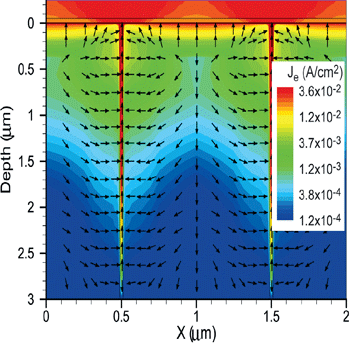Computational Modeling
NLR is making advances in computational modeling.
Previous technology was limited to one-dimensional solar cell models and focused on current-voltage curves and quantum-efficiency spectra. NLR has advanced this technology to two-dimensional solar cell models and expanded modeling capabilities to simulate our electro-optical measurements, including time-resolved photoluminescence, electron-beam-induced current, near-field scanning optical microscopy, and photoconductive decay.
Photovoltaic Optics Software
Also available is NLR's Photovoltaic (PV) Optics software package that was specifically developed for designing solar cells and modules and uses a combination of wave optics and ray-tracing techniques to handle thin-film solar cells, wafer-based cells, and the entire module (including non-planar or textured interfaces). Our PV Optics software can be used to optimize the optical performance of single- and multijunction cells and modules. We anticipate the upcoming completion of our next software package for a simplified electronic design of single- and multicrystalline silicon solar cells. Eventually, we will combine this new software package with PV Optics to deliver an accurate and comprehensive design package for all solar cells and modules.
Contact

Computational modeling sheds light how grain-boundary charge can affect solar cell current collection.
Share
Last Updated Dec. 6, 2025
